Let’s face it: the job market is tough on employers right now. There are more open positions than can be filled, and companies are doing whatever they can to keep and attract talent.
One excellent way to stay competitve is to offer your employees comprehensive employee benefit plans. Gone are the days where only meeting the legal benefits requirements is enough.
Below are 7 employee benefit examples you can work into your plans today!
Why Even Offer (Comprehensive) Employee Benefits?
There are many benefits to taking your company’s employee benefit plan seriously.
According to LinkedIn, companies rated highly for benefits and compensation saw 56% lower attrition rates. Another 92% of workers find benefits an “important contributor” to overall job satisfaction.
Offering competitive employee benefit plans proves to current and potential employees that you as a company care about their growth and wellbeing. You’re putting your money where your mouth is by offering benefits that help them feel better and advance in their careers.
Employee benefits are integral to retaining your best employees. Given the surge in people quitting their jobs post-pandemic, you want to do everything you can to attract and retain the best talent.
Lastly, offering various employee benefits helps your company stand out amongst competitors. In this competitive market with talent shortages across the board, standing out any way you can is essential. And considering the statistics above on the importance of benefits on talent, having a healthy employee benefits package can help you attract leading talent.
Employee Benefit Examples by Type
Here are some highly sought-after employee benefit examples you can adopt today.
Required by Law
First, let’s be clear that certain “benefits” are legally required. These include:
- Disability insurance (in some states)
- Social security and Medicare contributions
- Workers’ comp insurance to cover costs due to job-related injuries
- Unemployment insurance
- Family and medical leave (for employers with 50+ full-time people)
- Health insurance packages (for employers with 50+ full-time people)
The exact makeup of health insurance varies and can be an essential factor. We’ll discuss that in more detail next.
Example 1: Medical Insurance (Healthcare, Vision, and Dental)
There’s no standard for medical insurance, so the packages you choose to offer can be a differentiator. Factors such as levels of coverage, comprehensiveness of coverage, and cost to the employee all matter.
It’s important to note that medical insurance is an umbrella term. It covers various types of insurance such as healthcare, dental, and vision.
Healthcare insurance covers:
- Doctor’s fees
- Emergency fees
- Yearly physicals
- Pregnancy or maternity care
- Lab services
- Antibiotics
- Treating various illnesses (such as sore throats, the flu, mono, and more)
- Prescriptions
Dental insurance covers:
- Routine exams and preventative care (typically 100% covered)
- Tooth extraction
- Gum treatments (such as gum grafts or treatments of periodontal disease)
- Corrective treatment (such as braces and retainers, but less likely to be covered if solely cosmetic)
Vision insurance covers:
- Annual eye tests
- Medically necessary surgery (LASIK is usually not covered)
- Portions of new glasses or lenses
Which insurance plans you provide affect various levels of coverage and how comprehensive that coverage is, so choose packages that offer vast benefits to your employees. This is the most standard of all the employee benefit examples mentioned here.
Example 2: Life Insurance
What happens to your employee’s family if they die? Life insurance can protect loved ones by offering payouts in the event of death. Employers can provide life insurance policies to their workers. As with many other employee benefit examples mentioned here, this is optional, but it can attract potential employees.
Life insurance comes in various forms, including:
- Group accidental death and dismemberment insurance
- Split-dollar life insurance
- Business travel accident insurance
- Group term life insurance (this covers several people, rather than individual life insurance)
Example 3: Volunteer Days
Is one of your company’s core values to give back to the community? Offering paid volunteer days or other opportunities for employees to give back without sacrificing their paycheck helps you achieve that value.
Typically, companies will sponsor volunteer days. There may be one day per quarter where employees aren’t required to work and instead volunteer together. This can be volunteering at a local animal shelter, a beach cleanup, or working at a soup kitchen.
Not only is this rewarding for your employees and community, but it helps forge bonds between employees that will positively impact the workplace.
Example 4: Retirement Plans
Although some jobs offer guaranteed pensions, such as teaching or police work, many others don’t provide retirement benefits.
If you’re a smaller company with less cash on hand immediately, offering retirement benefits can help boost your employee benefit plans without costing you in the short term. Additionally, if these benefits are based on company profit, it encourages employees to work hard and help grow the business.
This is one of a few employee benefit examples that can be used to keep motivation high by incentivizing employees directly.
Example 5: Parental (Maternal and Paternal) Leave
Gone are the days where only mothers take care of young children. To stay competitive, offering generous maternal and paternal leave is essential.
While some companies continue to offer extremely short parental leave periods – as little as two weeks – consider offering employees months of paternal leave. This shows you care about your employees’ personal lives and families.
Example 6: Stock Options
This is one of those employee benefit examples, such as retirement plans, that benefits smaller companies. If your company isn’t making enough money to pay higher salaries, offer employees stock.
Stock almost always vests over time to encourage employees to stick around and continue growing the company. If they work hard and help your business succeed, the payoff can be enormous in the future.
Example 7: Reskilling or Upskilling
According to LinkedIn, companies that offer employee training saw 53% lower attrition rates. Giving your employees chances to reskill or upskill is one of many employee benefit examples that’s becoming more standard.
Examples of such opportunities include:
- Conferences
- Webinars
- Stipends for re- or upskilling resources (membership fees to niche-specific groups, subscription costs for educational resources, etc.)
- Education stipends
Final Word
As the jobseeker market continues to get more competitive, offering a comprehensive employee benefit package is an excellent way to attract and retain the best talent. Hopefully these employee benefit examples offered inspiration for how you can make your benefits even more compelling.
Are you struggling to attract and keep senior leadership talent? Jennings Executive can help you find the perfect match. Learn more today!
Related: 7 Incredible Benefits of Flexible Work: Should You Implement it?










